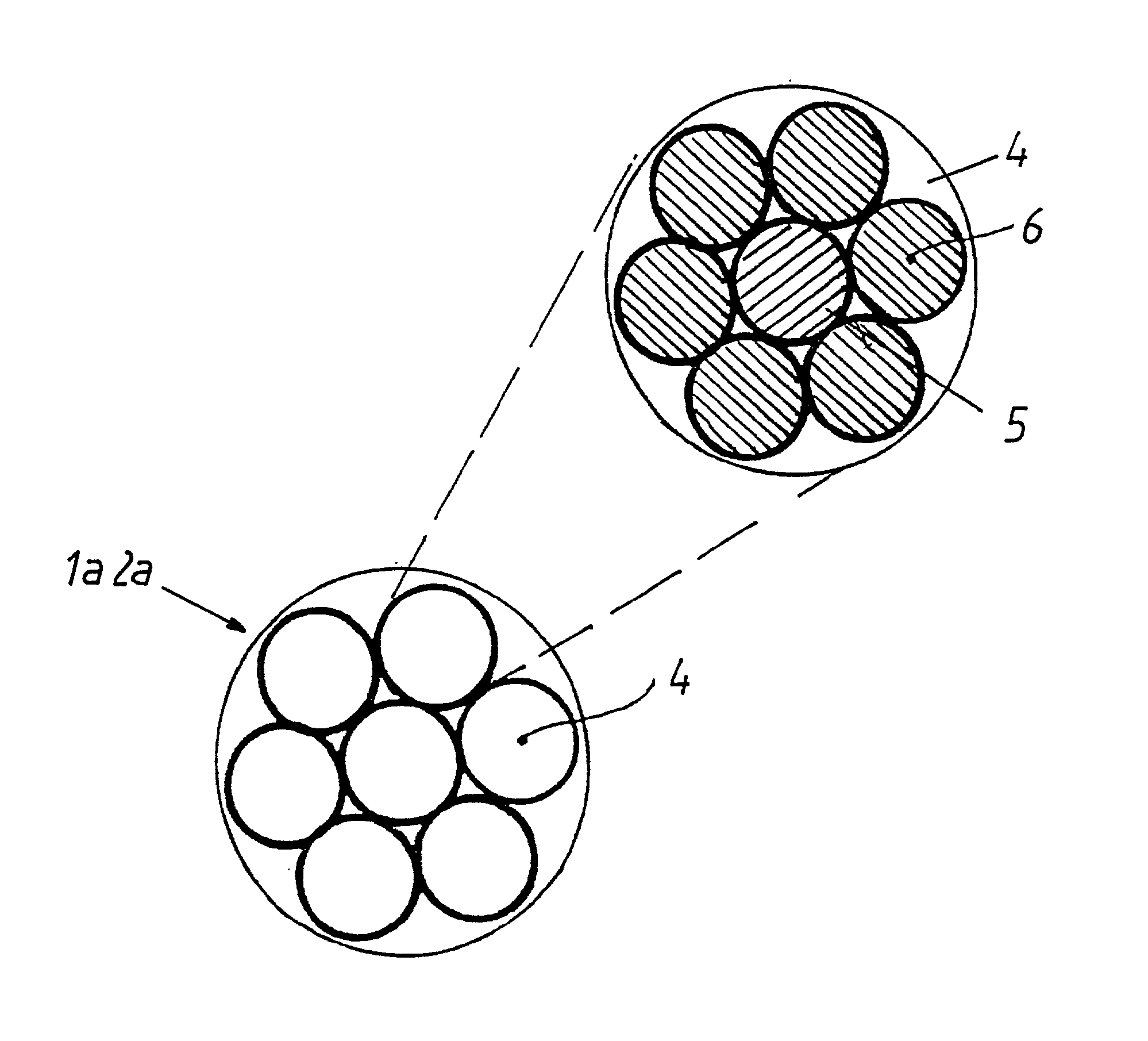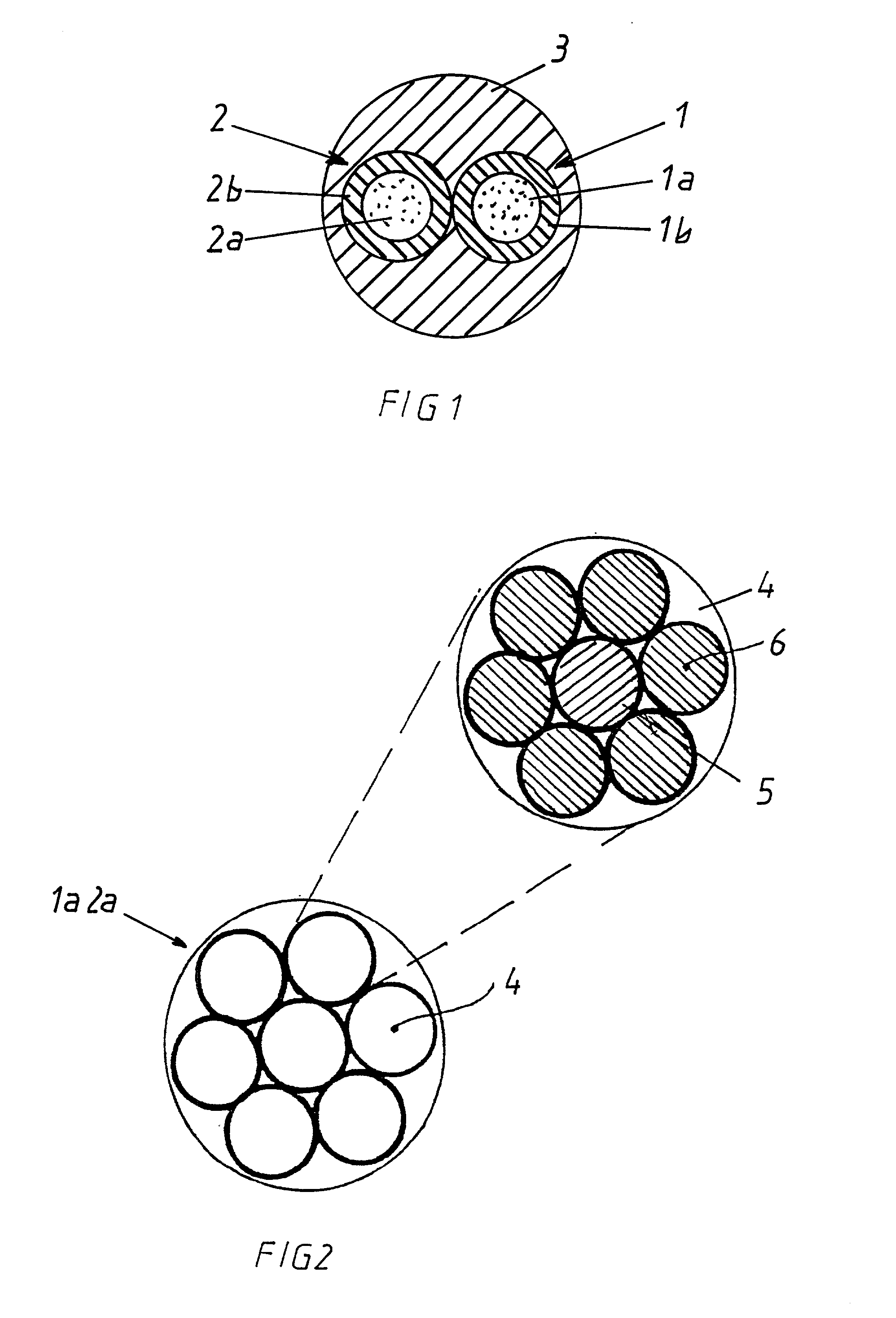Electrical cable
- Summary
- Abstract
- Description
- Claims
- Application Information
AI Technical Summary
Benefits of technology
Problems solved by technology
Method used
Image
Examples
Embodiment Construction
[0014] FIG. 1 is a cross section through an electrical cable, e.g., a sensor cable, comprising two strands 1 and 2 and a sheath 3 surrounding strands 1 and 2. Each strand comprises a conductor 1a or 2a and strand insulation 1b or 2b. The sheath 3 is preferably an extruded polyurethane sheath. The strand insulation 1a or 2b may be made of thermoplastic or cross-linked insulating materials. Preferred is irradiation cross linked polyethylene, polyurethane or a two-layer insulation, such as it is described, for instance, in the prior application 100 36 610.4.
[0015] The conductor 1a or 2a is a multi-wire strand as it is shown in FIG. 2.
[0016] The strand 1a, 2a consists of seven wire bundles 4, six of which are stranded as a layer around a central wire bundle. Each wire bundle 4 has an inner core wire 5 around which six individual wires 7 are stranded. These individual wires 7 are preferably stranded with an alternating direction of lay-which in cable technology is referred to as SZ-stran...
PUM
 Login to View More
Login to View More Abstract
Description
Claims
Application Information
 Login to View More
Login to View More - R&D Engineer
- R&D Manager
- IP Professional
- Industry Leading Data Capabilities
- Powerful AI technology
- Patent DNA Extraction
Browse by: Latest US Patents, China's latest patents, Technical Efficacy Thesaurus, Application Domain, Technology Topic, Popular Technical Reports.
© 2024 PatSnap. All rights reserved.Legal|Privacy policy|Modern Slavery Act Transparency Statement|Sitemap|About US| Contact US: help@patsnap.com









